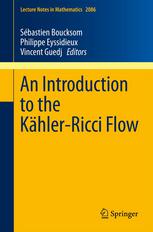

Most ebook files are in PDF format, so you can easily read them using various software such as Foxit Reader or directly on the Google Chrome browser.
Some ebook files are released by publishers in other formats such as .awz, .mobi, .epub, .fb2, etc. You may need to install specific software to read these formats on mobile/PC, such as Calibre.
Please read the tutorial at this link: https://ebookbell.com/faq
We offer FREE conversion to the popular formats you request; however, this may take some time. Therefore, right after payment, please email us, and we will try to provide the service as quickly as possible.
For some exceptional file formats or broken links (if any), please refrain from opening any disputes. Instead, email us first, and we will try to assist within a maximum of 6 hours.
EbookBell Team

5.0
68 reviewsThis volume collects lecture notes from courses offered at several conferences and workshops, and provides the first exposition in book form of the basic theory of the Kähler-Ricci flow and its current state-of-the-art. While several excellent books on Kähler-Einstein geometry are available, there have been no such works on the Kähler-Ricci flow. The book will serve as a valuable resource for graduate students and researchers in complex differential geometry, complex algebraic geometry and Riemannian geometry, and will hopefully foster further developments in this fascinating area of research.
The Ricci flow was first introduced by R. Hamilton in the early 1980s, and is central in G. Perelman’s celebrated proof of the Poincaré conjecture. When specialized for Kähler manifolds, it becomes the Kähler-Ricci flow, and reduces to a scalar PDE (parabolic complex Monge-Ampère equation).
As a spin-off of his breakthrough, G. Perelman proved the convergence of the Kähler-Ricci flow on Kähler-Einstein manifolds of positive scalar curvature (Fano manifolds). Shortly after, G. Tian and J. Song discovered a complex analogue of Perelman’s ideas: the Kähler-Ricci flow is a metric embodiment of the Minimal Model Program of the underlying manifold, and flips and divisorial contractions assume the role of Perelman’s surgeries.